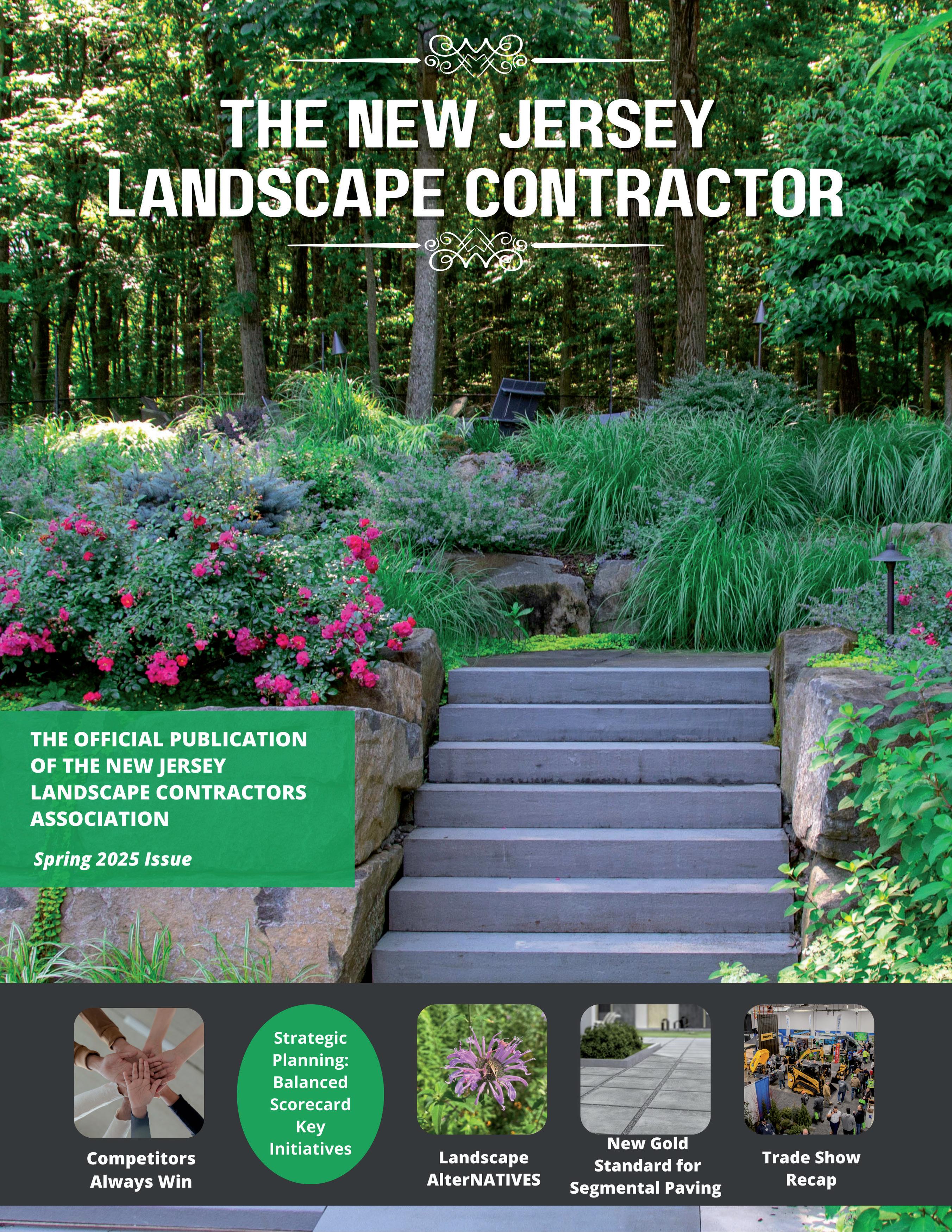
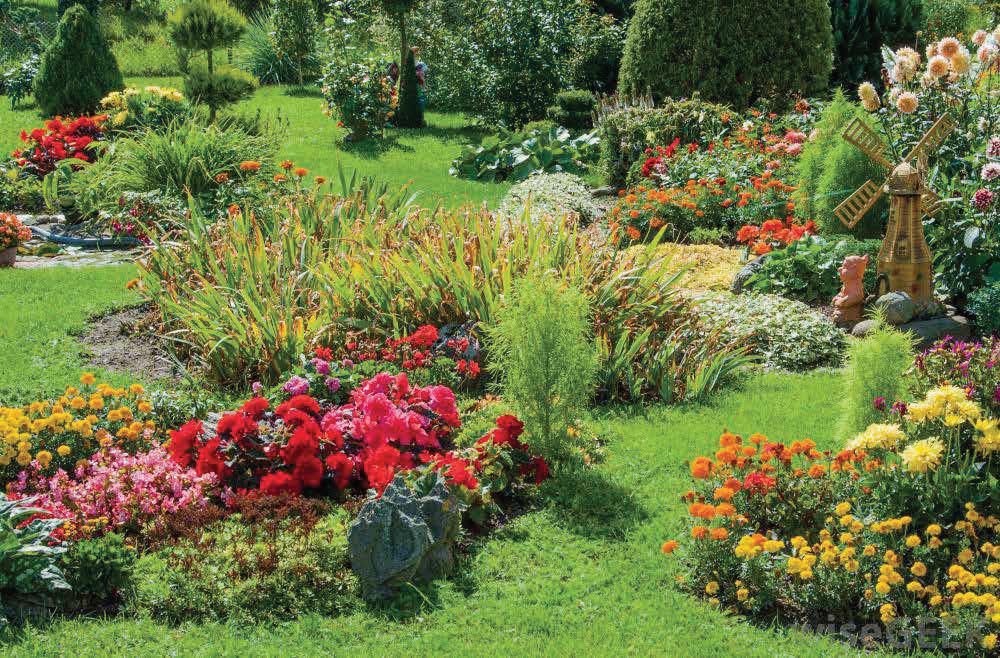















President’s Message
In Memoriam
Letter from the Editor
Landscape Achievement Awards
TurfTalk
Strategic Planning: Balanced Scorecard Key Initiatives
How Much Does Landscape Insurance Cost?
Welcome Members
The New Gold Standard for Segmental Paving Installation Has Arrived
Nursery on the Move
www.NJLCA.org
Competitors Always Win Take a Minute to Be Grateful
Trade Show Recap
New Jersey Contractors Showcase Expo
Landscape New Jersey Photo Recap
Associate Focus: Colorblends
Contractor Focus: Live Oak Landscape
Holiday Gala Photo Recap
Landscape AlterNATIVES: Wild Bergamot (Monarda Fistulosa)
Ag-Citing Happenings at Hionis Greenhouses

The New Jersey Landscape Contractor magazine is the official publication of the New Jersey Landscape Contractors Association, dedicated to the professional landscape industry of New Jersey. NJLCA was founded in 1966 as the Bergen County Landscape Contractors Association, and is today comprised of over 550 member companies throughout New Jersey.
New Jersey Landscape Contractors Association 465 Mola Blvd, Ste. 2, Elmwood Park, NJ 07407
Phone | 201-703-3600 -- Fax | 201-703-3776
E-mail | info@njlca.org
Visit our website at www.NJLCA.org
Publisher/Editor: Gail E. Woolcott
Administrative Assistant: Maria Albuquerque
Contributing Writers
Richard Andreu | Joe Bolognese Jr. |
Greg Carpenter | Steve Carretta | Steven Cesare, PhD | Daniel Moreland | J. Scott Mortensen | Jeffrey Scott | Gail Woolcott | Steven Yergeau
NJLCA Combined Board
President | Richard Andreu
Vice President | Kevin Dulio
Treasurer | Adam Reisboard
Chairman of the Board | Bob Pedatella
Director | Taylor Corbett
Director | Kevin Dulio
Director | George Futterknecht, CLP
Director | Ben Heller
Director | Shawn Kukol
Director | Omar Vasquez
Associate Director | David Gaynor
Associate Director | Rawn Leegwater
Associate Director | Wade Slover
Associate Director | AJ Tudda
Advisor | Dr. Steve Fischer, Bergen Comm. College
Advisor | Dr. James Murphy, Rutgers University
The New Jersey Landscape Contractor magazine is published triennially. 600 print copies are distributed to members and over 4,000 digital issues are sent to professionals in the Green Industry of New Jersey, as well as educational and governmental institutions. Subscription rates: $45.00 per year; $15.00 per issue. New Jersey residents only, please add 6.625% sales tax.
To advertise in The New Jersey Landscape Contractor, please contact Gail Woolcott at (201) 703-3600 or e-mail gwoolcott@njlca.org.
Article and photo submissions are encouraged and may be sent to NJLCA at the above address. Publisher assumes no responsibility for safekeeping or return of photos or manuscripts, and reserves all rights to edit material submitted for publication.
© 2025 New Jersey Landscape Contractors Association. All rights reserved. The contents of this publication may not be reproduced by any means, in whole or in part, without the prior written consent of the publisher. The opinions expressed in articles do not necessarily represent the opinions of the NJLCA.
Embracing the New Landscaping Season: Opportunities, Trends, and the Power of Connection
As we embark on a new season, it’s an exciting time for growth and innovation in our industry. One aspect I am particularly passionate about this year is seeing even more members participate in our association’s meetings and social gatherings. Over the years, I’ve received one question more than any other: “What’s the real benefit of being part of this association?” For me, the answer is simple—the value lies in the network I’ve been able to build, and the knowledge I’ve gained from the countless years of experience among my peers.
Being a member of the association offers more than just access to industry trends and resources; it’s about the relationships and the community you build along the way. The networking opportunities are truly second to none. The collective experience of fellow contractors, suppliers, and industry professionals is a treasure trove of insights. Over the years, I’ve learned invaluable lessons, gained actionable advice, and even discovered new approaches to old challenges simply by engaging with others at meetings and events. These connections have
made a significant impact on my own growth as a professional.
This season is full of potential, with sustainability, technological innovations, and outdoor living spaces at the forefront of the industry. These trends provide exciting opportunities to enhance our businesses and the services we provide to clients. However, staying ahead of these trends requires not just the right tools and knowledge but also the collective wisdom of others who have already navigated similar challenges.
The advice and insights I’ve gleaned over the years from fellow members have been invaluable in shaping my approach to how I handle the field . Whether it’s navigating new regulations, adopting sustainable practices, or integrating smart technology into designs, the guidance I’ve received has helped me remain competitive and innovative in a constantly changing industry. That’s the true power of being part of this association—the ability to learn from others’ experiences and share your own in a collaborative and supportive environment.
I truly hope to see more members take advantage of the opportunities to attend meetings and social gatherings this year. These events aren’t
just about discussing trends; they’re about building lasting relationships and learning from the wealth of knowledge right at our fingertips. The more we connect, the stronger our association becomes, and the more we all benefit. The connections you make today could be the key to your success tomorrow.

So, as we move into this new season, I encourage you to engage, connect, and learn from the amazing professionals around you. The benefits are immeasurable, and I know from personal experience that the relationships and knowledge you gain will make all the difference in your business and your career.
Sincerely,

Richard Andreu, NJLCA President


As we gear up for another year of growth, innovation, and inspiration in the green industry, I’m excited to bring you the latest edition of our magazine — packed with stories that celebrate achievement, share expertise, and strengthen our vibrant community.
We begin with a proud look at the Landscape Achievement Awards winners, where we honored the dedication, artistry, and excellence that define our industry. From lush landscapes to technical turf triumphs, these projects set the bar high. Speaking of turf, don’t miss this issue’s TurfTalk, where we explore timely topics every turf manager needs to know.
This issue also dives into the business side of landscaping. In Strategic Plan-
ning: Balanced Scorecard Key Initiatives, we outline practical tools for aligning your team and measuring success. Curious about risk management? How Much Does Landscape Insurance Cost? breaks down real numbers and options to help you make informed decisions.
If you’ve been considering updates to your paving practices, you’re in luck — The New Gold Standard for Segmental Paving Installation Has Arrived, and it’s changing the game.
We also reflect on recent events, including the annual Holiday Gala and Landscape New Jersey, with photo recaps that capture the camaraderie and energy we all felt. For those who missed our Trade Show, we’ve got a full recap of
the innovations and connections that made it a standout.

And as always, we bring you some green inspiration with Landscape AlterNATIVES, where we shine a spotlight on Wild Bergamot (Monarda fistulosa).
Thank you for being part of our growing community. Here’s to a successful season ahead!

Gail
Woolcott, Executive Director
Editor
of The New Jersey Landscape Contractor

Roger Dammer, the founder of the New Jersey Landscape Contractors Association (formerly the Bergen County Landscape Contractors Association) passed away on November 12, 2024.
Roger’s journey began in 1960, a time when the landscape industry was still finding its footing, and he faced the daunting task of mowing lawns and tackling yard work with limited knowledge about the complexities of insects and plant diseases. In his quest for knowledge, Roger reached out to fellow landscapers, including Skip Powers, and shared his vision of forming a Bergen County Landscape Association. With Skip’s enthusiasm and support, Roger took a bold step forward, contacting Bill
www.NJLCA.org
Oberholtzer to bring this idea to life. Their meeting at the Extension Service office in Hackensack marked the inception of a community that would transform the landscape industry. On June 6, 1966, 21 passionate individuals gathered, leading to the birth of the Bergen County Landscape Contractors Association, a testament to Roger’s leadership as he was elected president. His commitment to fostering collaboration and education among landscape professionals laid a strong foundation that continues to inspire us today.
In 1996, the BCLCA transformed into the NJLCA, marking a pivotal moment in our history that we owe largely to Roger’s re-
markable vision and tireless dedication. For years, he was not just a member but a vibrant force within the association, gracing our events with his presence and wisdom right up until his recent illness. Even as he faced challenges, Roger’s spirit shone brightly—who else could turn a brief visit into a lively storytelling session, complete with tales from Board Meetings of the 1960s, ‘70s and ‘80s?
He will be missed terribly, yet we are so happy to have had Roger for so long!
A celebration of Roger’s life was held on Saturday, November 16, 2024 in Ship Bottom, NJ. NJLCA was in attendance.














Whether you are looking to buy new or used, rent equipment, or have your existing fleet serviced, Foley, Incorporated has what you are looking for. In addition to Cat equipment, we offer all types of allied products, such as air compressors, light towers, trenchers, wood chippers, heaters, small compaction equipment and more.
Serving all of New Jersey, Staten Island, New York, Eastern Pennsylvania, and New Castle County, Delaware














AMT group health plans are designed to give small- to medium-sized businesses more options and better coverage and can save you money. We’ll review your needs and design the right plan for your organization to help keep your employees – and business – healthy.
Strong compliant benefit designs that limit employees’ out-of-pocket costs while providing unique plan features are offered through the Horizon Blue Cross Blue Shield network.
• Horizon Advocate – personalized information and support including connection with 24/7 registered nurses.
• Dedicated clinical advocates assisting members with both existing and emerging conditions.
• My Health Manager – trac k personal health information and find ways to reach your health goals.
• Virtual Care 24/7 through Horizon CareOnlineSM –urgent care, primary care, dermatology, and behavioral health.
• Mental health resources – face-to-face (in person or virtual visits).
• Blue365® – health and wellness discount program.
• S365® – healthcare navigation platform that makes it simple to find care and understand costs.
• Health maternity program.
• Diabetes prevention program.
• Cancer treatment support.
In addition to the exclusive benefits AMT has to offer, members will also recieve:
•Access to thousands of doctors and medical facilities across New Jersey and, with Blue Card, the United States.
•EDI (Electronic Data Interchange) feeds available.
•Dental, vision, and life insurance solutions.
•Integrated and no-cost HRA & HSA solutions.
•A dedicated service representative throughout the implementation process and ongoing member support.
•AMT will provide commission to brokers of record of groups with 51 or more eligible employees.

If you have a business with 1 – 499 employees, scan the QR code to visit https://www.amt-nj.com/quote.php and receive your free, AMT Health Plan Checkup.



Never rush the base prep. The longevity of any patio, walkway, or retaining wall depends on a well-compacted, properly graded, and dry base.
Excavate deep enough to allow for proper base materials:
• 4–6” compacted gravel for pedestrian use
• 6–12” for vehicular applications (like driveways)
Use clean, angular gravel (like ¾” quarry process or crushed stone) for optimal compaction and drainage.
Compact in 2–3” lifts with a plate compactor—don’t just compact the top!


Let the base sit overnight (or longer) if possible before installing the surface. It helps identify any settling or soft spots.
Grade the base with 1–2% slope away from structures to prevent water issues.

Rhododendrons
Pieris
Azaleas
Perennials
Nature’s Classics
Roses
Flowering Shrubs
Evergreens
Proven

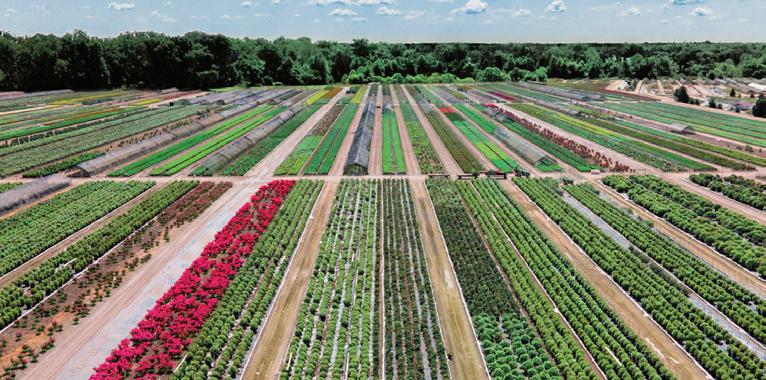
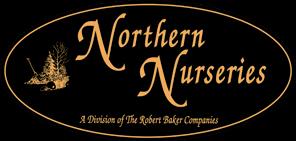
Grass
Hydroseeding Materials
Extensive Selection of Stone Products
Landscape
Lighting
Turf & Nursery
Sales Specialists
Knowledgeable Technical Support Professional Customer Service Reliable Availability Timely Delivery Service
Spyder Delivery Available



Once again spring is upon us. With our temperatures being above normal and rainfall below normal, I am predicting a crab grassy summer. Without soil temps elevated, the window for complete control of crab grass may be even smaller than ever.
I can hear the grumbling already. How are you supposed to do your clean ups and put your first application down in 3 weeks? Well good news, since we are in a drought, there will be no rain in our immediate future, we can stay out every
by Greg Carpenter, CLT, American Beauty Landscape
night to do that one more clean-up. Six days a week, 4 weeks in March...that’s 24 extra clean ups done. And if you hear of any rain coming, you might want to get out there and apply your Dimension to the properties that you have already completed a clean up.
Remember that even if you apply your Dimension early, if there is no rain or irrigation, the Dimension will begin to degenerate in the sunlight. All fertilizers with dual action will react in this manner. The pre-emergent or insecticide or weed

killer component is on the outside of the pellet. It is the first thing to disburse when irrigated. However, it is the first thing to break down. If the pellet has no water, it will break down by the sun.

Of all the applications we make over the year, crab grass pre-emergent is absolutely the one application that has to be applied and irrigated perfectly or, all season it will look like you have no idea what you are doing.
On another note, why do people thatch in the fall? Isn’t it better to wait until all weeds are dead? Then you get the most benefit of the turf.
FYI - this is my 48th year of doing clean-ups
Good Luck and Keep Growing






A savvy business owner from Michigan called me the other day to talk about her company’s annual strategic plan for the new year. Fueled by optimism, while overwhelmed by creativity, the business owner sought some meaningful structure to organize her thoughts, specify performance goals, and package the overarching plan in an easy-to-understand framework for her team. With strategic intent positioned indelibly at the forefront of any clairvoyant exercise, I have long maintained that all organizational strategic plans, business models, and performance audits be configured within the context of the Balanced Scorecard.
Theoretically strong and pragmatically convenient, the Balanced Scorecard postulates that organizations must have equitable, interdependent focus on four concurrent goal quadrants to enjoy ongoing success:
1. Financial: An organization’s financial performance and use of financial resources. In the Green Industry, this goal quadrant typically addresses revenue from all available sources (e.g., maintenance, design-build, irrigation, trees, installation, snow, plant health care, enhancements, pest management).
2. Employee: Human capital, culture, and other capacities that are key to breakthrough performance. In the Green Industry, this goal quadrant normally tracks field employee staffing levels, position turnover, and Foreman retention rates, as well as the number of fullytrained field employees, average days to fill a staffing vacancy, bench strength percentage, and myriad organizational culture measurements.
3. Process: The quality and efficiency of an organization’s performance related to its products, services, or internal business procedures. In the Green Industry, this goal quadrant usually tracks the gross margin percentage for each revenue source identified in the Financial quadrant, though it can also monitor: revenue per employee, labor efficiency, average DSO, outstanding purchase orders, days to implement a new system (e.g., BOSS, IT, CRM, purchasing), debt-to-equity ratio, and equipment repair.
4. Customer: Organizational performance from the perspective of the company’s customer base. In the


by Steven Cesare, PhD, The Harvest Group
Green Industry, this goal quadrant normally addresses maintenance job retention rate, job quality ratings, or Design-Build customer portfolio diversification; though it can also track customer service feedback, YELP reviews, sales capture rates, and percentage of new construction clients added per year.

Likened to a dinner table with four legs or a set of tires on your automobile, the Balanced Scorecard avers that if any goal quadrant is not symmetrical with the other reliant quadrants, ineffective results will inevitably occur, impeding long-term viability. By way of metaphor, if that pesky table at your favorite cafe has one leg that is too short, thereby causing you discomfort, you and I both know you will get the obligatory napkin, fold it, and place it under the shortened table leg to regain its balance and your convenience. Similarly, it does not matter which of your car tires has low air pressure, the undeniable result is substandard vehicle performance, indicative of a potential long-term hazard.
The Financial Quadrant addresses new revenue (e.g., maintenance, construction, enhancements, irrigation, snow, trees) coming into a company. Lamentably, in direct contradiction to the ethos of the Balanced Scorecard, most business owners focus extensively, if not exclusively, on this goal. Naturally, as a capitalist, I readily acknowledge the vital role that revenue contributes to “organizational success.”




Honor, yes; homage, no.
A company that enjoys financial growth, yet has a toxic employee culture (e.g., high employee turnover, numerous lawsuits, distrust of management, disproportionate injury rate), or that cannot meet gross margin goals due to exorbitant overtime, excessive materials costs, or inaccurate job estimates, or that consistently fails to meet customer expectations (e.g., frequent call-back work, poor job quality, unsatisfactory renewal rates), will not enjoy “sustainable organizational success.”
To enjoy sustainable organizational success, sage businesses pay equivalent attention to all four quadrants of the Balanced Scorecard.
Given that overview, here are the most common key initiatives that most astute landscapers consider when addressing the Financial quadrant.
1. Based on the rolling three-year average, establish monthly revenue goals for each department
2. Determine the Marketing budget, with a written Marketing Plan, and an adjoining Marketing Calendar
3. Have monthly meetings aimed at improving the quality and quantity of lead generation
4. Improve the quality of all marketing documents and sales proposal materials
5. Double the number of new sales proposals, enhancements, and change orders distributed each week
6. Increase pricing (e.g., billable rates, materials costs, service fees, mark-up)
7. Revise the company web site to be more entrepreneurial, promote SEO, interactivity, video content
8. Create a Sales War Room; install a push-pin wall map; populate and leverage the Sales Matrix
9. Meet with each Sales Representative weekly to track his/ her Sales Pipeline Report
10. Require each Sales Representative to make at least five cold calls per day; log the calls
11. View all prospective maintenance contracts in light of potential enhancements/snow opportunities
12. Adopt a three-tiered approach to sales commission rates with an adjoining bonus program


13. Create SOPs for developing a new sales proposal, selling enhancements and change orders
14. Implement monthly Social Media Campaigns (e.g., Twitter, Facebook, Instagram, LinkedIn)
15. Consider adding a new revenue stream (e.g., irrigation, plant health care, subcontracting)
As a capitalist, three non-negotiable factors are interwoven throughout all these initiatives, solely intended to achieve desired financial goals. First, the incentives, commissions, and bonuses attached to each metric must be undeniably lucrative to motivate the employees. Second, focus primarily on the weekly procedures designed to achieve the results, not just the monthly outcomes. Third, hold your employees accountable for their individual progress. If you don’t do all three of these components, stop wasting your time and that of your employees, convince yourself that you are too busy, and just do what you did last year.
The Employee quadrant crystallizes comprehensive attention onto the most dynamic aspect of most organizations: The workforce; the engine that drives the company. Whether it be staffing, wages, lawsuits, discipline, or communication, all business owners think more about their employee issues than the other three quadrants. Successful owners understand that preconception and have leveraged employee issues into a value equation intent on maximizing employee alignment, commitment, and productivity.
With that mindset in place, here are some of the popular key initiatives that successful business owners in the green industry build around as part of their annual strategic plan within the Employee quadrant.
1. Establish monthly staffing goals by position for each department
2. Define, role model, and institutionalize the Company Culture
3. Publish the company goals and hold employees accountable for achieving them each month
4. Significantly increase the payout for the Employee Referral Bonus Program

5. Be in the yard every day, for dispatch or arrival; smile and talk with your field employees
6. Create a Career Ladder, with job descriptions, tandem performance evaluations, and wage scales
7. Implement a quarterly employee Rewards and Recognition ceremony
8. Design an annual Safety Training Calendar
9. Develop a series of Field Employee Training Programs (e.g., Laborer, Foreman, Irrigator)
10. Hold all Foremen accountable for achieving their OSHA 10-hour certification

The owner should attend every New Employee Orientation Program
15. Develop an Employee Density Recruitment Map, Recruitment Plan, and Social Media Calendar
16. Conduct all annual employee performance reviews during the same week, in Quarter 1
17. Read, research, and revise the Employee Handbook every year
18. Conduct all employee audits (e.g., I-9 Forms, SDSs, OSHA records, payroll, file management)
19. Create Success Behaviors for each Company Core Value; disseminate them to all employees
20. Develop an individualized Training Plan for every executive, supervisor, and manager
While clearly extensive, this list of Employee initiatives is far from exhaustive. This quadrant is fundamentally dynamic, demanding exorbitant time, effort, and resources to either proactively create and perpetuate a results-based team-oriented culture, or instead, respond reactively to a significant calamity (e.g., serious injury, lawsuit, government audit). As a based capitalist, if you think any of these Employee initiatives is unnecessary, frivolous, or too costly, I suggest you work more hours every week and let me know where that orientation gets you and your company over the long-term.
Oh, by the way, I want to see your “before and after” photos.
The Process quadrant focuses extensively on how well the company utilizes its resources, administers its systems, and monitors precise measurement to gauge ongoing progress toward desired procedural goals. Project management, cost containment, and relentless follow-up are essential to the success of this quadrant; methodological inaccuracy, empirical indifference, or shareholder immaturity assuredly preordain interminable regret.
That point being said, here are some of the most frequentlycited key initiatives that many landscapers and I discuss when trying to maximize the holy grail of ROI for the Process quadrant.
1. Develop an annual budget and track results, variances, and accountabilities on a monthly basis
2. Establish and publish the monthly Gross Margin goals for each field department
3. Ensure all Managers and Supervisors know the formula, drivers, and impact of Gross Margin
4. Ensure all Supervisors and Foremen know the labor hours for each job every day
5. Reduce all overtime hours
6. Know the Hourly Average Wage for each crew
7. Calculate and increase the Revenue Per Employee metric for each field department
8. Know and track the Gross Margin for each job, within each department
9. Recalibrate field production rates every October
10. Develop Operating Routines for all Field Supervisors and Foremen to standardize efficiency
11. Require competitive bids from multiple vendors before purchasing field materials
12. Calculate the true costs for a full work crew, new customer acquisition, and staffing vacancies
13. Eliminate all Will-call purchases
14. Reduce outstanding accounts payable to less than 10% past 30 days
15. Implement job sequencing, rotation maps, and audit procedures for every job site

“... many green industry businesses begrudgingly provide only perfunctory attention, basic service, and obligatory communication to their customers...”
16. Institute estimating and review procedures to ensure all sales/enhancements proposals are accurate
17. Draft SOPs and flow charts for all key field operations and office administrative procedures
18. Upgrade the company IT, security, and yard protection systems
19. Implement rigorous preventive maintenance programs for all field tools, equipment, and vehicles
20. Bid out all insurance programs (e.g., GL, vehicle, EPLI, WC, health benefits, Inland Marine) annually
As shown, the degree by which a company applies its resources, systems, and metrics must be carefully configured on both effective design and efficient application. This quadrant must discern success, not manifest bureaucracy, paralysis, or tedium. More, is not necessarily better; better, is always better.
The holy grail of optimal ROI is due in large part to the capitalistic mindset contained in the Process quadrant.
While it is tacitly understood that customers are central to every company’s success, it is imperative to remember that customers, like finances, or employees, or processes, are not always the paramount interest of a company. That’s why it is called the “Balanced Scorecard.” Having great customers, but inadequate gross margin is neither desirable, justifiable, or effective. Likewise, a tenured customer base that mistreats your employees, runs a delinquent payment schedule, or contracts with another landscaper to do enhancements work, is not opportune for growth, ease, or success. Some might say that is not balanced.
It’s not difficult: All the quadrants must exemplify synergy for a company to be successful.
In general, I have found that many green industry businesses begrudgingly provide only perfunctory attention, basic service, and obligatory communication to their customers, all the while hoping their maintenance (or snow, or lawn care) contracts will be renewed for another season. Hope is good; professionalism is better. That said, here are several Customer quadrant best practices demonstrated by serious green industry business owners throughout the country.
1. Establish annual Customer Retention goals for the Maintenance Department
2. Implement a Job Quality Program replete with forthright training, goals, and bonus potential
3. Require all employees attend annual Customer Service Training
4. Return all customer emails and voice-mails before the end of each workday
5. The owner(s) must have face-to-face contact with at least one customer every week
6. The owner(s) must talk to at least one customer every day
7. Include Before and After Photos of each job in every Maintenance job renewal
8. Design, implement, and improve the New Job Start Up Process
9. Create a Customer File for every customer
10. Take one Top Tier customer to lunch every week
11. Establish a Client Retention Bonus Program
12. Have a Customer Appreciation Open-House event each year
13. Implement a highly-personal Client Relations Management (CRM) Program
14. Highlight a specific customer job each month as part of the company’s social media campaign
15. Implement a Jobs in Jeopardy Program
16. Establish a Job Autopsy Program
17. Leverage the Job Listing Report
18. Develop an annual Landscape Development Plan for each customer
19. The owner(s) should attend at least one customer walkthrough each week
20. Collect customer satisfaction data (e.g., 30 days after job completion, mid-season, quarterly reports)
As a capitalist, the Financial quadrant has an endearing quality to me. As the Human Resources person, the Employee quadrant is my comfort zone. As a control freak, the Process quadrant signifies precision to me. As a member of the Green Industry, the Customer quadrant conveys partnership to me.
As a businessman, the Balanced Scorecard defines sustainable organizational success to me.
Ready for a trick question? Which goal quadrant is the most important for your company?
Steve Cesare has more than 30 years of human resources experience. Currently, Steve is a Principal Consultant with the Harvest Group, a nation-wide firm.
Steve earned his Ph.D. in Industrial/Organizational Psychology from Old Dominion University. He has authored 68 professional journal articles and made over 60 presentations at professional conferences. Additionally, he has 17 years of collegiate teaching experience at Old Dominion University and the University of San Diego.
If you have any questions or comments about this topic or anything else related to human resources, simply call Steve at (760) 685-3800.



















In the dynamic world of landscaping, protecting your business is not just about having the right tools and talent, but also ensuring you have the right insurance coverage.
For landscaping business owners, understanding the cost of insurance is vital for planning and risk management.
This article delves into the intricacies of landscaping insurance costs, guiding you through the various types of insurance needed, the risks involved in the landscaping business, and providing insights into how much insurance might cost for your landscaping enterprise.
Landscaping businesses, with their unique blend of artistry and labor, face numerous risks. Whether it’s dealing with heavy machinery like lawn mowers, performing services on various properties, or managing a team of workers, each aspect comes with its own set of challenges.
Insurance plays a crucial role in safeguarding against these risks.
It not only protects your business from potential liabilities but also provides peace of mind, ensuring that unforeseen incidents don’t derail your operations. From property damage to injuries on the job, the right insurance coverage is essential to shielding your business from financial losses.

For a landscaping company, several types of insurance are essential:
• General Liability Coverage: This is fundamental for any landscaping business. It protects against thirdparty claims of property damage or bodily injury. For instance, if a client trips over your equipment and gets injured, this coverage can help.
• Workers Comp: Given the physical nature of landscaping work, workers’ compensation insurance is crucial. It covers medical costs and lost wages if employees get injured on the job.
• Commercial Auto Insurance: If your business uses vehicles for transporting equipment or staff, this insurance covers damages from accidents involving your business vehicles.
• Commercial Property Insurance: This covers your business premises and equipment. If your landscaping equipment gets stolen or damaged, this insurance can help cover the losses.
Understanding the type of coverage each of these offers is key to determining the right insurance mix for your business.
Several factors impact the landscaping insurance cost:
• Coverage Limit: Higher limits offer more protection but also come at a higher cost.
• Number of Employees: More employees typically mean higher insurance premiums, particularly for workers’ compensation.
• Types of Landscaping Services: The risk level of your services (e.g., basic lawn care vs. extensive landscape design) can influence costs.
• Equipment Used: The value and nature of the equipment, such as lawn mowers, affect the cost, especially for property insurance.
• Claims History: A history of many claims can lead to higher premiums.
Each of these factors needs to be carefully considered when evaluating your insurance needs.
Determining the exact landscaping business insurance cost can be challenging due to the variability of the factors mentioned above. However, general estimates suggest:
• Landscaping Liability Insurance Cost: Can range significantly based on the business size and risk factors.
• Workers Comp and Commercial Auto Insurance: These depend on the number of employees and vehicles, respectively.
• Commercial Property Insurance: Varies based on the value of your property and equipment.
It’s important to note that these are ballpark figures. For a precise understanding of how much insurance cost for a landscaping business, getting a personalized quote from insurance companies or consulting with an insurance agent is essential.
eral liability coverage, workers comp, and other policies. An agent can guide you through the process of balancing cost with risk, ensuring you have adequate protection without overpaying.
Insurance is more than just a legal requirement; it’s a vital part of protecting the financial health of your business.
The right insurance policies safeguard against significant financial losses that can arise from accidents, lawsuits, or property damage.
For instance, if an expensive piece of equipment like a lawn mower is damaged, having the right coverage can mean the difference between a minor setback and a major financial crisis. In essence, insurance is an investment in the stability and longevity of your landscaping company.

Selecting the appropriate insurance is crucial for any landscaping business. Consulting with an experienced insurance agent can help tailor a policy to your specific needs.
Factors to consider include:
• The scale of your operations
• The number of employees
• Types of services offered (like landscape design)
• The equipment used Different businesses will have varying requirements for gen-
Navigating the world of landscaping business insurance costs can be complex, but it’s essential for protecting your business from the many risks it faces daily. Whether it’s property damage, employee injuries, or liability claims, the right insurance coverage provides a safety net, allowing you to focus on growing your business.
While the cost of insurance varies based on numerous factors, investing in the right types and amounts of insurance is indispensable for any responsible business owner. By understanding the nuances of landscaping liability insurance cost and consulting with professionals, you can ensure that your landscaping business is well-equipped to handle the challenges ahead.
A warm welcome to our new and returning members
7 Treasures Lawn Care, LLC
Marcos Mata Franklin, NJ













AB Marketing Group
Michael Harrison Bloomfield, NJ
Abel Hardscape
Abel Cortes Washington Twp., NJ
Acatlán Landscape, LLC
Enrique Rivera Montvale, NJ
American Fence Company Corp.
Lela Miloseska Elmwood Park, NJ
Apollo Gardening, LLC
Steve Goodale Hightstown, NJ
Avila Landscaping
Gerardo Avila Lakewood, NJ
Best Gate & Fence of NJ, Inc.
Joe Rimelis Fairfield, NJ
Blue Grass Lawncare, LLC
Carlos Bautista Clifton, NJ
BQS Financial Advisors
Brian Severin New York, NY
Brandywine Growers, LLC
Anthony Frani Brandywine, MD
BT Property Services
Brandan Torres Totowa, NJ
CER Development, LLC
Anna Marie Cerretta Pompton Plains, NJ
Clear View Landscaping and Design, LLC
Luis Baum Butler, NJ



Cottonwood Landscaping, Inc.
Bryan Grieco Rochelle Park, NJ
Devlin Outdoors
Justin Devlin Nutley, NJ
Earthify Landscapes
Shravya Peddigari Secaucus, NJ
Elegant Lawns NJ
David Rabinowitz / Gordon Rich Inwood, NY
Exclusive Contracting
Anthony LaRosa Woodridge, NJ

Extreme Green Landscaping, LLC
Colin Gartz Allenwood, NJ
Fox Hollow Landscaping & Design



Don Covart Boonton, NJ
Full Service Aquatics
Mike Gannon Stewartsville, NJ
Green Dots Landscape, LLC
Pedro Martinez Hillsdale, NJ
Green Earth Landscaping & Design, Inc.
Mark Moore West Milford, NJ
H&P Services, LLC
Alejandro Herrera Butler, NJ

Haughey Brothers Landscaping
Ethan Haughey Cranford, NJ
Ideal Block

Maura Morley Westford, MA
Integrated Landscape Management

Bill Toeplitz Flemington, NJ




Jersey Soil Blending, LLC
Anthony Pavelec Nutley, NJ
K Macken Landscaping, LLC
Kevin Macken West Caldwell, NJ
Kaplan Landscaping
Jake Kaplan Park Ridge, NJ
KB Snowplowing, LLC
Donald Krug Bernardsville, NJ
Landscape Experts, LLC
Steven Incekara Springfield, NJ

Landscape Maverick
Enmanuel Tejada Jersey City, NJ
LandscapeHub




Allison Aller Chicago, IL
LCC Landscapes
Lou Caggiano, Jr. Fairfield, NJ
Legoland NY Resort
James Sutton Goshen, NY
M & I Palma Landscaping, LLC
Miguel Sanchez Wappinger Falls, NY
Mario Lazo West New York, NJ




MassMutual
Julio Lantigua Warren, NJ
MC Greenfield Landscaping, LLC
Manuel Campoverde Hackensack, NJ
Merchant Compass
Steve Donkochik Oakland Park, FL
Meticulous Landscaping, Inc.
Robert Kraft Waretown, NJ

MGM Landscaping, LLC
Maria Zamlout Wayne, NJ
MJN Construction, LLC

Apolynar Montoya Deal, NJ

Monti Landscaping
Dennis Monti Rockaway, NJ
Nature’s Own Lawns

Wesley Morrison Scotch Plains, NJ
Navarrete Landscaping, LLC
Israel Alanis Hackensack, NJ
Nunez Landscaping

Angel Nunez West Orange, NJ

Pinelands Nursery & Supply
Tom Knezick Columbus, NJ
Raymond Smith Landscape Design, LLC
Raymond Smith Allendale, NJ
Robinson Strategic Advisors





James Robinson Flemington, NJ
RT34/RT9 Yards
Brian Baldasare Howell, NJ
Ryser’s Landscape Supply
Devin\Marty Ryser Little Silver, NJ
Scenic Source
Luis Cabrera Hightstown, NJ
Sierra Verde Landscaping
Miguel Pleitez Hawthorne, NJ
Splash Sales & Marketing
Jim Daulerio Hatboro, PA

Split Rock Design Anthony Cortese Maplewood, NJ

Around 2012-2013 porcelain paving hit America like wildfire for good reasons: it was more durable, attractive, and required less maintenance than concrete and in many cases many natural stone alternatives. This is not a knock on concrete or natural hardscapes, as a matter of fact I made the case for all three alternatives in a previous issue of this very publication.
When porcelain was first introduced many hardscape importers promoted that porcelain pavers could be installed to ICPI (now CMHA) standards: a compacted subgrade to 98% proctor density overlaid with a minimum of 4” of ASTM-2940 compacted base to again 98% proctor. On top of the base would be 1” of screeded ASTM-C33 washed concrete sand with the porcelain placed using a sand-hammer using spacer tiles and the joints filled with sand or polymeric sand.
This was well meaning but as it turns out porcelain is lightweight and does not set into sand as heavier, smaller concrete units do. It has been also reported in the

field that polymeric sand does not work as well with porcelain as it may with concrete pavers. Complaints of rocking, clunking, and hollow-noises were reported.
2025 is here and now we can confidentially report a NEW good, better, and GOLD STANDARD selection for porcelain paver installation.
The “Good” is installing the units on a clean stone 3/8” setting bed on top of an appropriate ¾” clean stone base as determined by the engineer. Using a Romex Eco-Fine sand to fill the joints will provide a true permeable system.
The “Better” is adhering the units with a back-buttered adhesive on the bottom of paving units then laying them on top of a concrete base using an appropriate thin set and grout for the environment. There are quality thin-set brands for this application, including Romex (more on Romex shortly). For pool installers, this may be the only choice as CMHA best practice guidelines are for a concrete deck around the perimeter of a pool. This is also a method required by many engineers for not only porcelain but also smaller concrete pavers for crosswalks and other vehicular applications.
Now to the true Gold Standard, which provides contractors with not only a durable and guaranteed installation solution but a highly permeable and vehicular tested one: the Romex Trass System.
The Romex Trass System cross section is as follows: a minimum 6” base of compacted clean open graded aggregate. A minimum 1 ½” of the Trass Bed system which is achieved by mixing a simple formula of 1 bag of Romex Trass Bed bagged product to 4 parts 3/8” clean stone to 1/2 parts of clean water mixed as per manufacturer recommendations then screeded just like sand. New Jersey contrac-
tors that mix cement materials to create mortar edge restraints should already be comfortable with this.
The porcelain pavers are then adhered to the Trass Setting Bed using a Romex Adhesion Elutriant which can be mixed in a bucket then back-buttered to under the paving units as per TCNA standards. Temporary horseshoe spacers should be placed between the units so the openings can accept jointing materials.
Eco-Fine jointing compound is placed on top of the adhered units as the horseshoe spacers are removed. While adding water, the Eco-Fine material is squeegeed into the joints, with excess swept off the pavement.
After 22+ years of hardscape installation and after a live training this past winter on this technology I was highly impressed with the ease of this method and after visiting our work a day later the durability of the system even after just 24 hours.




Stanley Black and Decker
Danielle Keohane Collingswood, NJ
Sue-Ellen Wright Union City, NJ
TerraCare, Inc.
Gary Kayal Oakland, NJ
TKJ Landscaping, LLC
Ted Klingert Verona, NJ
Touch of Green Landscape
Matthew Novak Westwood, NJ

But don’t take my word for it. Go on YouTube and punch in “Daltile Romex Tank” to see and amazing demonstration of the vehicular capabilities of this system.
The best news? Romex works well with concrete pavers and natural stone as well so check their website for solutions for those products:
https://romexhardscapes.com
Daltile Xteriors offers a full endorsement of the Romex system for its porcelain pavers: Daltile.com/xteriors
It is my opinion that the “stone dust versus sand” argument when it comes to hardscapes at this point in our industry is checkers. Romex is CHESS! Feel free to contact me anytime to discuss how Romex solutions can benefit upcoming projects.


Twin Oaks Landscape Design, LLC
Robert Jorgensen Hillsborough Township, NJ
Vernon’s Landscaping, LLC
Vernon Hopper Phillipsburg, NJ
Vision Pool Service, Inc.
Keith Steinhoff Park Ridge, NJ

We Find Plants
Jason Moore Rochester, NY

Daniel Moreland is a 22+ year veteran of the Hardscapes Industry as a CMHA Concrete Paving Installer Instructor with classes in 7 states including Hardscapes North America who has trained hundreds of engineers and architects throughout the Northeast U.S. with accredited courses on pavers and porcelain. He is available to respond to questions about this article at 610-730-9506 or Daniel.moreland@daltile.com



















If you live or work in the Northern New Jersey area, then you most likely have seen, heard of or visited what boasts being one of the largest Wholesale/Retail Nursery/Garden Centers in the Garden State. Victoria’s Nursery has been serving Landscape Contractors and the local retail community for over 3 Decades. With a wide selection of Native and Ornamental plants, Evergreens, Flowering & Shade Trees, Shrubs, Annuals & Perennials, Grass Seed, Control Products & Groundcover, as well as Lime & Stone, Mulches, Soil, Landscape Tools and much more, Victoria’s has what you need to ensure

your home and/or business is kept beautiful all year round.
Well, this 2025 will mark an exciting time for the Nursery as they say goodbye to their Paramus NJ location of over 30 years and embark on their new home in Closter, NJ.
But this is not just any new location, it is a location that most of us at the NJLCA also know just as well. It is the former site of Lupardi’s Nursery. Yes, the wellknown spot at 75 Blanch Ave Closter, NJ is now the new home for Victoria’s Nursery. Tony Lupardi Jr., property & previous

nursery owner, is excited that the site will still house the same type of business his land has seen since 1946. Victoria’s is in full swing for the spring season in its new location and is open for business. Let’s all congratulate them on their new location and support them by stopping in and saying hello, wishing them continued success and checking out their stock of Garden State Essentials.
Victoria’s, here’s to even more years of Victory!




Who is winning: you or your competitor?
I have been operating in business for a long time and discovered two truths:
1. Things are always changing, and 2. Competitors always win.
But I don’t mean that your competitors are beating YOU.
Rather, they are competing against themselves by pushing and grinding, making constant jumps forward.
Are you a worthy competitor?
Here are 3 case studies to help you figure this out.
The first is about me, the other two are from your “competitors” in the landscape space.
1. My Own Growth Path.
We kicked off our consulting business 16 years ago, and have had a larger than life impact on so many companies and people in our industry.
We didn’t start with this goal in mind, but we did have a “competitive spirit.”
We were always grinding, educating ourselves, and seeking out coaches who could guide us.
“Competing” includes:
• Facing reality: Reviewing our successes and failures and getting clear on what’s really happening. Not as I wish it were, but how it actually is. (It takes an open mind to see things clearly - one of the benefits of having a coach.)
• Taking ownership of my own failures: Not blaming others, nor blaming my team, but taking control of my reality.
• Having a growth mindset when faced with obstacles. Leaning into the challenges and growing through them.
And perhaps most important.
• Setting big goals and getting

outside our comfort zone. When my gut says something is uncomfortable, I lean into it. It’s my guiding light.
Here is another example of a winning competitor
2. John Denninger, owner of Chesterfield Lawns & Landscapes, Missouri.
He is one of the newest members of our Leaders Edge peer group; we just held an event at his facility!
Even before we got to his place, I could tell he was a winner because of how he competed in his personal life.
In his own words,
• “I have had chronic pain for over 10 years, it got so bad I needed back surgery, but before I went under the knife, I tried stem cell treatment and physical therapy. That was 2020, I felt a lot better by 2022 and I decided I would do something big with my life.
• I tried biking in 2023 and got hooked. In 2024 I started racing a few small races then signed up for this big race and started extensive training. All summer I’ve been doing endurance training getting up to 75 mile bike rides taking 5-6 hours through elevations of 5000 ft.
• I’ve never done endurance training before, and it’s been interesting to stretch my bodies limits further than I ever thought possible. My inspiration has been my wife and endurance athletes like David Goggins and Cameron Hanes”
Hats off to John! He is a beast and will
do great things in his business, as we saw when we visited his place.
3. Collaborating with your competitors.
Sometimes having a competitive spirit means embracing your competition.
They may inspire you, and they may make good partners. I just introduced two landscape professionals in Columbus to each other, Molly John (MJ Design) and Jeffrey Stroupe (Landscapes by Terra).
They are my long time clients, and already knew and respected each other.
They don’t really compete head on. I urged them to collaborate more; the opportunities were obvious when we made the visit.
Your Challenge - Unlock Your Competitive Spirit.
Stop fearing what the other company is doing, or how they are pricing their work.
Business is an Infinite game so keep pushing your own boundaries: the only ones that matter.
My wish for you: become so good that others will want to collaborate with you!
That will lift up the whole industry.

P.S. We have the coaching tools, templates, business strategies and mental maps that can help you make big jumps in your growth. If you want our help, let me know or visit here: https:// jeffreyscott.biz/consulting
Jeffrey Scott is the leading authority on growth and profit maximization in the green industry.
He grew his high-end landscape firm into a successful $15+ million enterprise, and he now helps others achieve profound success.
Jeffrey has consulted with over 300 lawn and landscape companies over the past 10+ years, and he facilitates the industry’s largest peer group of landscape and irrigation business owners. His clients achieve between 25% to 200% profit improvement in their first year.
Jeffrey has published hundreds of articles in all the major industry publications and over 10,000 people read his weekly newsletter, Growth Tips.



Congratulations to us all! With the start of 2025, we have just completed another ‘trip around the sun’! If your trip was anything like mine, it was another adventure filled with both highs and lows as well as a fair share of turbulence. Speeds ranged from excitingly fast to painfully slow, and clients ranged from mostly enjoyable to occasionally ‘challenging’. I was able to work on some very exciting projects, with some really great people, as well as some real ‘snooze fests’, which, fortunately, also occurred with some really great people. The weather was the weather and that is just the way it goes, nothing I could do about it and I gave up fighting it a long time ago. Throughout this journey, I never failed to be grateful for where I was and what I was getting to do. It is one of the joys of getting older, learning to more easily appreciate what you have and who you have it with.
The industry that we, as Landscape Contractors, are in is not easy, especially if you are doing it right, like our members are. There are real challenges we face that we must manage and mitigate, often on a daily basis and sometimes there is just not enough time in the day, or aspirin in the medicine cabinet, to get all the things completed that we would like to.
Whether it is issues relating to employees, supply chain shortages, endless government regulations, competition from the ‘blow and go’s’ as well as the invasive species du jour, the problems can be endless. Fortunately for us, we are all ‘problem solvers’ by nature. It is what we do, and we accept this because it is in our blood, and nothing can change this fact.
From tired lawns, worn-out landscapes, invasive species attacking us from all sides, and hardscapes that have yet to exist or are soon to be non-existent,
people have problems, large and small, and their problems are everywhere and their ‘owners’ are looking for us. Arriving with this endless supply of problems, and the associated amount of opportunity, are things such as exhaustion, burn out, an occasional feeling of doom and gloom, sprinkled in with a little crankiness. If you are not careful you can get caught up in these feelings, which will do you, your family, and clients no good. So how can you alleviate these issues?
Well, I like to start with some good rum from Barbados but, that can be a conversation for another time. Meanwhile, I practice expressing gratitude. I am grateful that so many people have so many landscape problems and that they are willing to pay me, and my team, to help solve them both now and in the future. I genuinely enjoy working with them and consider their properties my own.
Their problems allow us to do what we do best, and help others solve their problems. We get to do this while simultaneously getting to work outdoors (no cubicle for me!) on some truly great projects, with some truly nice people, providing for ourselves and our families. We get to do this with other creative people who share this same passion and commitment to problem solving. Our designers care about their plans, our growers care about their plants, our hardscape suppliers care about their materials and our coworkers care about our great clients and each other.
I am grateful for my great team of suppliers because
without them I would be lost. I am especially grateful to those who deal with plant material, they help me show off my skills by offering me multiple solutions and always treat my projects as if they were their own. The same holds true for our various subcontractors as well as all our other great vendors, who consistently help us to help others.
But I am most grateful for my fellow employees who bring with them a tremendous amount of skill, passion, and knowledge. They are truly great problem solvers who care about our clients, their projects, and our team. Although I would like more, I could not ask for better. Because of them, I am able to have the life I have with a roof over my head, food in the pantry and clothes on my back. They also provide me with the opportunity to do what I love, solve people’s problems, work with beautiful plants in some truly great gardens, while still enjoying some great personal time with friends and family both now, and

in the future. All of these amazing individuals consistently make me look better than I really am, and I am grateful.
So, I suggest you take some time this winter to just ‘chill’, decompress, and reflect. Think about your journey this past year, both the ups and the downs, and find things to be grateful for, things that make you and the people you care about happy. Carry these feelings of gratitude throughout this new journey, and the journeys that follow. By doing so, you will allow yourself to experience life in a new way and I bet you will find yourself not only to be a better landscape contractor but, more importantly, a better person. You will gain more energy and more stamina, which will provide you with greater creativity to solve the never-ending stream of problems that, hopefully, will come your way. You will also learn to appreciate the day-to-day activities that make us who we are, some of the best people and some of the best landscape contractors in the world!

you do not feel like writing a note, I would be more than grateful for just the rum. Maybe we will share it together!

So, the new year has arrived, there is no time to wait, spring will be here before you know it! Steal some time for yourself, rejoice in being grateful, and soon you will not only see but also feel the remarkable results. If you feel my suggestion improved your happiness, as well as those you surround yourself with, feel free to send me a thank you note and a bottle of Bajan rum. If

Mission Statement
The New Jersey Landscape Contractors Association (NJLCA) is a proven resource to the landscape contractor, green industry service provider and supplier, as well as the consumer. We are a community of green industry professionals who are dedicated to advancing the integrity, proficiency and continued growth of the landscape and green industry. We do this through education, training and legislative advocacy.
New Jersey Landscape Contractors Association represents the entire Green Industry in New Jersey including landscape contractors, landscape architects, sod growers, nurseries, growers, garden centers, horticulturists, floriculture and the industries that supply them.
Through educational seminars, trade shows, social events, networking opportunities, membership meetings, magazines and professionalism in all that we do, the Association is able to fulfill its mission.
Wishing you all great health, success, and happiness, in 2025 and beyond.
J. ‘Scott’ Mortensen is Founder and President of Cedarwood Landscaping, Inc., located in Chester NJ. Since 1984 he and his team have designed, built and maintained ‘Great Gardens for Great People’.
Al D. Landscape, Tree and Garden Supply Stop aldlandscapingandtree.com......64 All Service Contractors Equipment www.allservicerents.com.......16
Association Member Trust www.amt-nj.com.....................18 Bergen Brick Stone & Tile www.bergenbrick.com...........12
Braen Supply www.braensupply.com...........63 Cambridge Pavers www.cambridgepavers.com.......6
Cliffside Body Corp www.cliffsidebody.com............8
Downes Forest Products 973-238-4430...........................44 Foley, Inc. www.foleyinc.com..................10
Landscape Materials Inc. Landscapematerialsinc.com......22
Matera’s Nursery 201-943-8288 ............................2
Middletown Trailer www.middletowntrailer.com.....32
Northern Nurseries www.northernnurseries.com......20 Tech Terra techterraenvironmental.com....14

We’re still buzzing from the success of the NJLCA’s 38th Annual Landscape New Jersey Trade Show! Held on February 26th at the Meadowlands Expo Center in Secaucus, the event brought together over 2,000 landscape pros for a jam-packed day of learning, networking, and discovering what’s new in the industry.
This year’s show had something for everyone—from landscapers and hardscapers to turf experts, nursery folks, greenhouse growers, municipal teams, students, and more. The energy in the room was amazing as people connected, shared ideas, and checked out the latest tools, tech, and trends helping businesses thrive.
For the second year in a row, the exhibit floor was completely sold out—and the demand just keeps growing! Every inch of the Expo Center was filled with a huge variety of vendors showing off everything from heavy machinery and handheld tools (lots of cool electric options!) to mulch, pavers, turf, software, and business services. It was a great mix of products and innovations that really showcased how fast our industry is evolving.
We were super excited to launch our new NJLCA Buyer’s Guide app this year. It’s a digital version of our printed guide, and it made it way easier to find vendors, keep track of booths to visit, check out the seminar schedule, and read up on speakers. We even added a new “scan and go” feature for the classes—so attendees could sign in and out with their phones and automatically get credit for CEUs. While it’s still a work in progress, we’re confident the app is going to make the whole show experience even smoother in the future.
Education was another big highlight this year. We hosted 18 great seminars and workshops on everything from sustainability and tech to business tips and equipment updates. The sessions were packed with valuable info and real takeaways professionals can use to level up their skills and grow their businesses.
We also held our 10th Annual Silent Auction to raise money for scholarships and support for NJLCA member families. Thanks to the generosity of everyone who participated, we raised several thousand dollars for the NJLCA Education Fund—helping future landscape professionals get the tools and training they need.
With another fantastic trade show in the books, we’re already looking ahead to our next big event: the New Jersey Contractors Showcase Expo, coming this August to County College of Morris. This outdoor event is all about hands-on demos and test-driving equipment—definitely a can’t-miss for anyone in the industry.
If you’re not already a member of NJLCA, now’s the perfect time to join! Head to www.njlca.org to stay in the loop on upcoming events, industry news, and all the great benefits membership brings.
Huge thanks to everyone who helped make Landscape New Jersey 2025 such a success. We loved seeing you there and can’t wait to do it all again next year!







Schipper & Company started in the Netherlands in 1912, when telephones were uncommon, radios were used only for ship-to-shore communication and the television had not warmed a single living room with its glow.
Cornelis Schipper brought the company to the United States after World War II and took Dutch bulbs from customer to customer in his business coupe. Cor and his wife, Sabine, raised a lawyer, an architect, a small businessman, a big businessman and finally, in their youngest son, Tim, a bulb merchant to carry on the family tradition.
Colorblends, part of Schipper & Company USA, is still family-owned and still sells bulbs to some of the same customers Cornelis visited 50 years ago. What’s new are blends: carefully choreographed mixtures of tulips, daffodils and other bulbs that combine two, three or more varieties for jaw-dropping, car-stopping spring displays. There is nothing wrong with a block of one color, but the tapestry effect of a blend takes spring-flowering bulbs to a whole new level. For more info, visit www.colorblends.com
Michael Sidlowski is the founder and CEO of Live Oak Landscape Contractors, a company he established in 1993 following his graduation from Rutgers University with a BS in Landscape Architecture. Over the past three decades, Michael has steered Live Oak’s evolution from a design-build firm into a comprehensive landscape service provider, offering a full spectrum of services including design-build, property care, irrigation, and snow removal. Michael is a Licensed Landscape Architect and is a Licensed Irrigation Contractor in the state of NJ
Under Michael’s visionary leadership, Live Oak has experienced significant growth, now boasting a team of over 100 employees. The company’s success is underscored by the long-term commitment of its staff, with many key team members having tenures exceeding 15 years. This stability reflects the positive work environment and growth opportunities fostered within the organization.
For more info visit www.liveoaklandscape.com







by Steven Yergeau, Agriculture & Natural Resources Agent (Ocean & Atlantic Counties)
Native plants are an ideal way to incorporate sustainable vegetation into yards for clients who are environmentally minded. Native plants are adapted to local climate and soil conditions, requiring less water, fertilizers, and pesticides than non-native vegetation. For landscapers who have property owners looking for native alternatives to non-native vegetation, this column provides options to meet your client’s needs.
Wild bergamot (Monarda fistulosa) is a native, perennial flower of the mint family, Lamiaceae. It can grow up to 4 feet high at maturity and spread up to 3 feet. Wild bergamot can have multiple stems giving it a bushy appearance (Photo 1). It blooms in the summer (June through September) with showy pink, lavender, or white tubular flowers that are used by native pollinators like butterflies, bees, and hummingbirds (Photo 2). Because of its importance as a source of nectar, wild bergamot is also knows as beebalm.
Wild bergamot prefers dry, well-drained soils and will not thrive in moist or poorly drained soils in cultivation. It grows well in most soil types from acidic to alkaline and prefers full sun but can endure partial shade. Wild bergamot does well along wooded areas and thickets, and in open fields that provide plenty of sunlight. It is considered resistant to deer browsing.

Wherever planted, wild bergamot requires space to grow as it spreads by both seeds and underground rhizomes. It can be an aggressive flower that takes
over the area where planted. Dividing clusters of wild bergamot every 2 to 3 years will help to reduce or avoid spreading into unwanted areas.
Native to North America from Canada in the north to Georgia in the south and as far west as Arizona, wild bergamot is a wildlife friendly option to use in yards with drier conditions. Wild bergamot is an excellent choice to use instead of many non-native flowers for attracting pollinators, like lilacs (Syringa species) and especially the butterfly bush (Buddleia davidii).

You can find nurseries in New Jersey that sell native plants by visiting the Jersey-Friendly Yards website at http://www.jerseyyards. org/jersey-friendly-plants/where-to-buynative-plants/.
Steven Yergeau, Ph.D. is the County Agent for Rutgers Cooperative Extension of Ocean and Atlantic Counties. He is also an Associate Professor in Agriculture and Natural Resources. For more info visit https://ocean.njaes.rutgers.edu.



The New Jersey Landscape Contractors Association recently had the honor of attending the 52nd Celebration of National Agriculture Day held at Hionis Greenhouses, 4 Coddington Rd, Whitehouse Station, NJ. National Agriculture Day is celebrated every March 18, to recognize the contributions to our great nation from farmers, producers & ranchers. Founded in 1973 by the Agriculture Council of America, its purpose is to promote awareness of agriculture’s role in modern society. The day paid tribute to those who dedicate their lives to feeding, fueling, clothing, and beautifying the nation, emphasizing agriculture as a vital part of American history and culture.


Special guests from The Garden States legislature included Asw. Mitchelle Drulis, Asm. Roy Freiman, Asm. William Spearman and Sec. of Agriculture Ed Wengryn. Each guest spoke briefly about the importance of Agriculture, especially in the state of New Jersey and the responsibility we all have, to appreciate the hard work and dedication of everyone in the industry. They also reminded us to spread awareness not only on National Agriculture Day, but every day as well. Our industry as well as members of the NJLCA have the unique opportunity to interact with and support the Growers and Suppliers of New Jersey’s Agriculture by purchasing Plants, Shrubs, Flowers, Fruits & Vegetables and much more from them.
One Grower and Supplier of such materials is Hionis Greenhouses who graciously hosted the event. Hionis was also celebrating a milestone of its 40th Anniversary. To celebrate this special occasion, they offered us all a grand tour of the facility. Walking through the Greenhouses, they explained the growing process starting from small cuttings of plants, root establishment, transplanting, packaging, and shipment. One unique stop was at newly acquired cutting machines which took the cuttings and individually placed them, one at a time, in pre-soiled growing trays. With impressive precision and accuracy, the machines can place approximately 155 cuttings every 2.5 minutes. (Check out the awesome videos here )
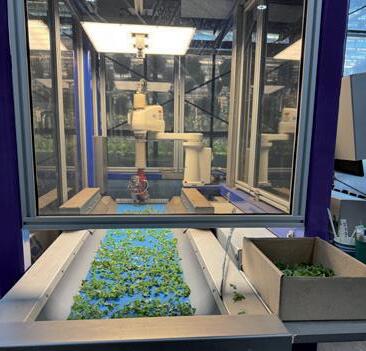
We then arrived at the sorting area where different plants were transferred to larger pots and trays to be integrated into the massive inventory within the greenhouses to receive daily sun, water mist and temperature-controlled air to keep the material the healthiest it can be, until they reach their final destinations. The facility is impressive, and the tour really gives you a new perspective and appreciation for all the demanding work that goes into ensuring the end consumer receives the highest quality products. Our final stop was to the storage area where thousands of tulips, hyacinths, daffodils etc. were kept perfectly contained waiting for distribution to hundreds of local and national wholesale and retail vendors for the spring and holiday seasons.

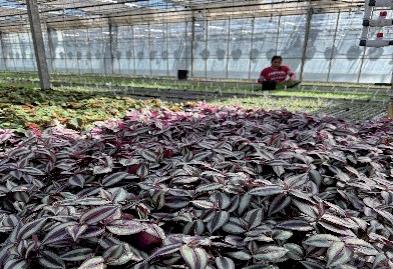


And just when you thought it couldn’t get any better, the entire Hionis Family came out to welcome and greet each of us for attending. Even Angie & Spiros Hionis were there along with their four hard-working sons, Gerry, Tim, Pete, and Spiro Jr. Racks upon racks of colorful, vibrant, and beautiful smelling potted flowering bulbs covered the area like mother nature’s canvas. And each one of us was graciously gifted with a pot to take home and plant in our own yards to remember the day and continually experience the sights and smells for years to come.
The NJLCA would like to thank and congratulate Hionis on their 40th Anniversary and wish them many more years of continued success as they help provide us with nature’s agricultural gifts. We also thank our NJ State Assembly Representatives and the Sec. of Agriculture for joining us to celebrate these two special occasions and help everyone in The Garden State to continue “Growing Every Day!”












